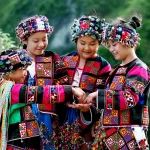The Mid-Autumn Festival in Vietnam, or Tết Trung Thu, is a vibrant and heartwarming celebration that encapsulates the essence of family unity, cultural richness, and the joy of togetherness. From colorful lanterns illuminating the streets to the rich flavors of mooncakes that tantalize the taste buds, Tết Trung Thu is a joyful homage to childhood and family heritage. It is a time for reflection, gratitude, and celebration, making it an unforgettable experience for locals and visitors alike.
1. When is the Mid-Autumn Festival 2024?
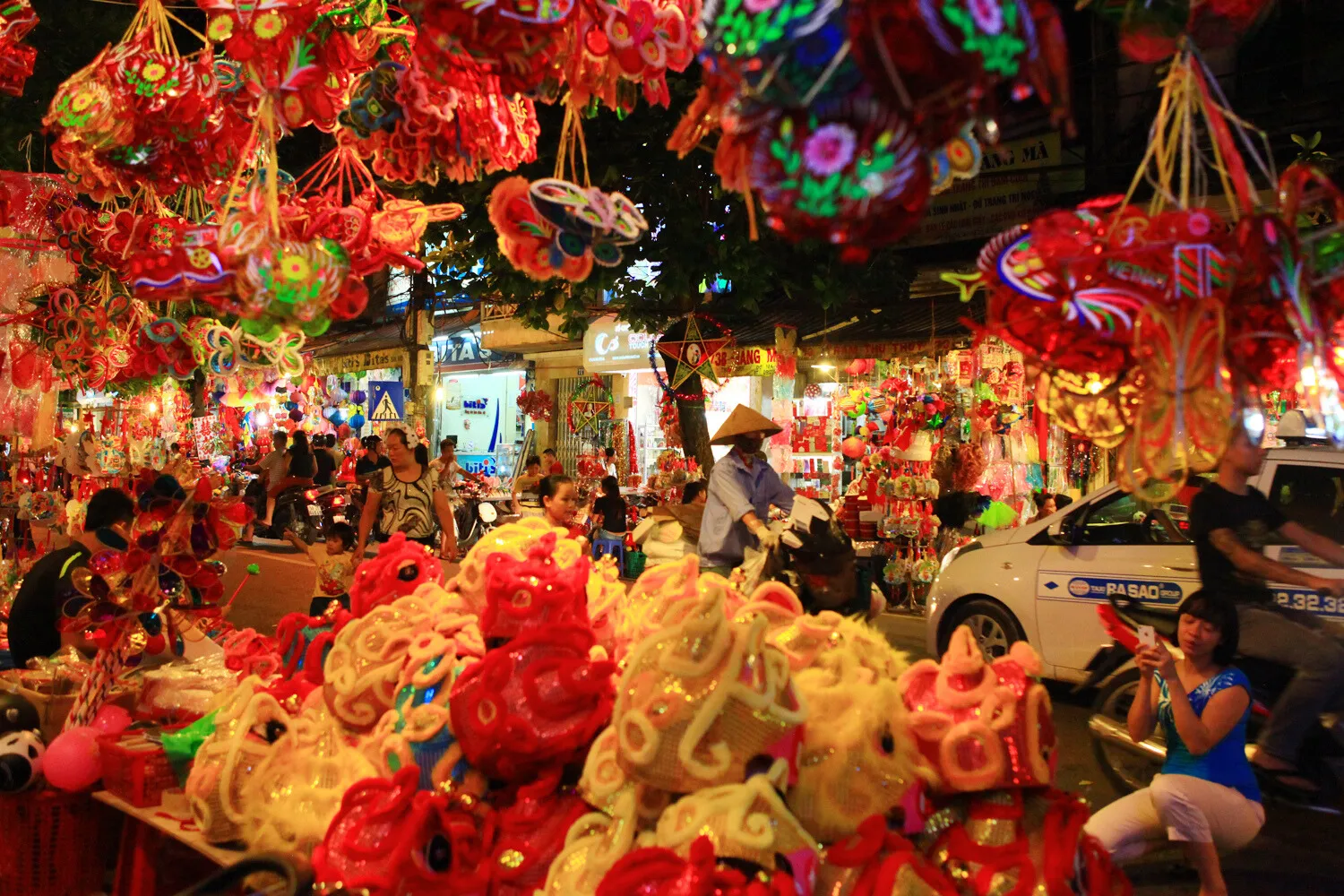
The festival, traditionally celebrated on the 15th day of the 8th lunar month
For those looking to join in on Vietnam’s cherished celebration, the Mid-Autumn Festival 2024 will take place on September 17. Like a celestial rhythm that marks the passage of time, this festival falls on the 15th day of the 8th lunar month, coinciding with the full moon. Each year, this day resonates with a blend of excitement and nostalgia as children eagerly await the opportunity to partake in the various activities, traditions, and delectable mooncakes.
This particular event marks a significant moment for Vietnamese families, reminiscent of a loving embrace gathered under the soft, silvery light of the moon. Cultures worldwide celebrate lunar-related festivities, yet the unique traditions and practices of Vietnam enrich this festival even further. Families both within Vietnam and abroad come together, sharing stories and memories woven into the fabric of Tết Trung Thu.
As emotions run high with anticipation, the festival brings a sense of unity that transcends generations. Parents recount childhood experiences filled with laughter, lantern processions, and the shared joy of mooncake gatherings. The festival profoundly connects communities, turning the moon into a witness of love and tradition, and showcasing the importance of togetherness that defines Vietnamese culture.
2. The Origins of the Mid-Autumn Festival
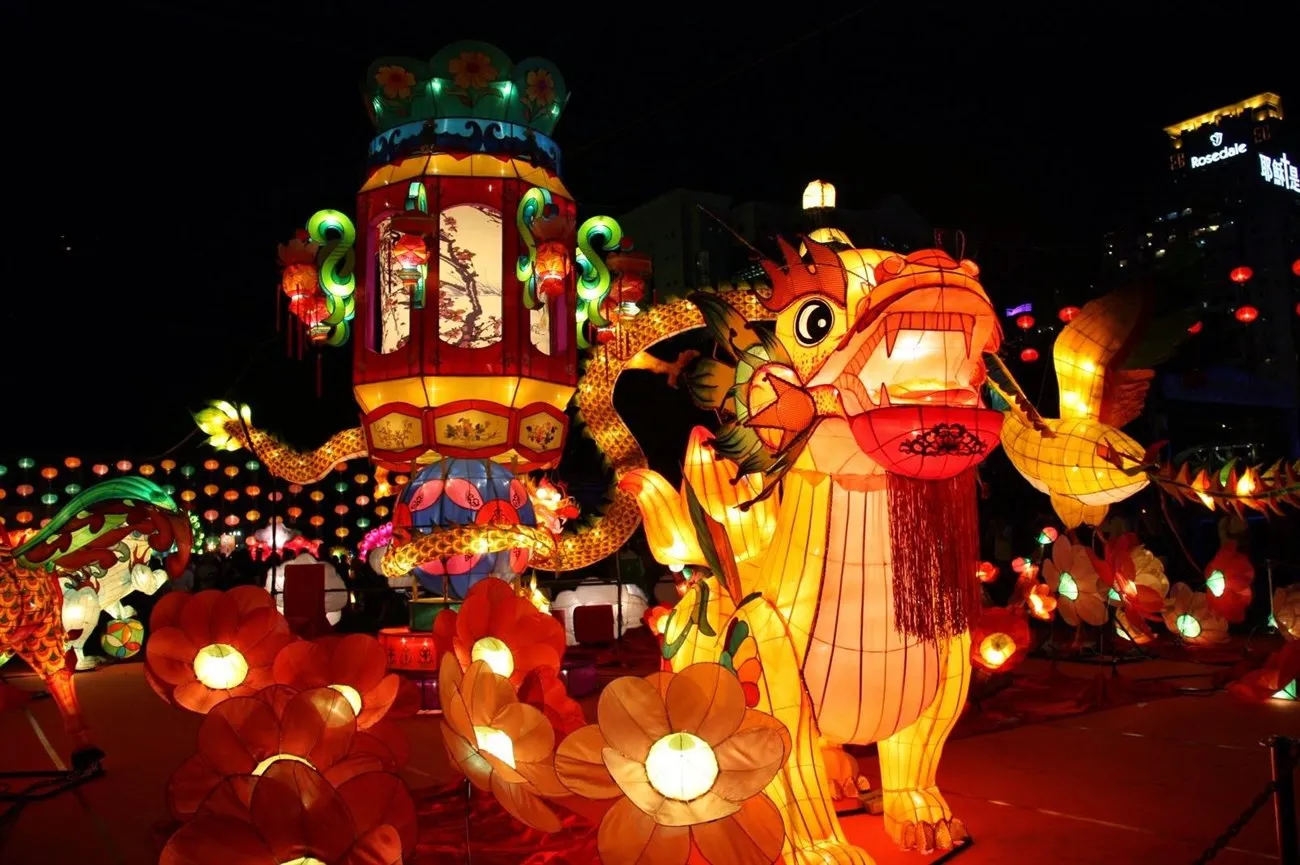
Over time, the event became not just about moon-watching but also about reconnecting with loved ones and celebrating the harvest
2.1 The Festival’s Ancient Beginnings
The origins of the Mid-Autumn Festival trace back to ancient Vietnamese traditions, with roots deep in agricultural society. The festival, tied to lunar celebrations and harvest seasons, emphasizes the gratitude of families for the fruits of their labor. Over the centuries, this rich history has led the festival to evolve, blending varied customs and practices that enrich the celebration.
In its early beginnings, the Mid-Autumn Festival was a time to honor the harvest and indulge in feasting as families gathered under the light of the full moon. One could liken it to an annual reunion of families, each member contributing their talents and skills to create a rich tapestry of celebration much like various colors coming together to create a beautiful painting. As the moon’s light illuminated the night sky, families came together, sharing stories, laughter, and food that symbolized their unity.
As the years turned into centuries, Tết Trung Thu flourished, evolving into a festival where childhood enjoyment took center stage. The shared experiences of making lanterns, enjoying mooncakes, and participating in lion dances are symbolic representations of that historical journey. Families weave their stories into the fabric of the festival; parents share tales of their own experiences, ensuring the tradition passes on, like a cherished heirloom, to future generations.
2.2 The Story of Cuội: Folklore and Symbolism
Among the enchanting tales associated with the Mid-Autumn Festival, the story of Cuội stands out as a beacon of love, sacrifice, and resilience. Legend has it that Cuội was a woodcutter blessed with the gift of a magical banyan tree, which possessed the ability to heal the sick. When Cuội fell in love with Hằng Nga, the Moon Goddess, fate took an unexpected turn, leading him to journey beyond the earthly realm.
The banyan tree reflects the importance of connection, grounding Cuội’s tale in rich symbolism. The tree serves as a metaphor for the nurturing bond between the earth and its people, with its sprawling branches mirroring the far-reaching connections within families. Like each leaf contributing to the tree’s wholeness, so too does each family member bring unique stories and perspectives to cherished gatherings highlighting the interconnectedness of their shared experiences.
The story explores themes of longing and separation, as Cuội finds himself exiled to the moon after a series of unfortunate events. Yet, even in exile, he remains a symbol of hope and love, connecting children with the fantastical and the heartwarming each Tết Trung Thu.
As families gather to celebrate the Mid-Autumn Festival, Cuội’s legacy lives on, imprinted in the hearts of those who tell his story. Parents often gather their children to recount the tale, encouraging them to reflect on its meaning and the values it instills. It serves as a gentle reminder that through the light of the moon, their connection to each other and to folklore endures.
3. Mid-Autumn Festival: Traditional Foods and Offerings
3.1 Mooncakes: The Centerpiece of the Festival
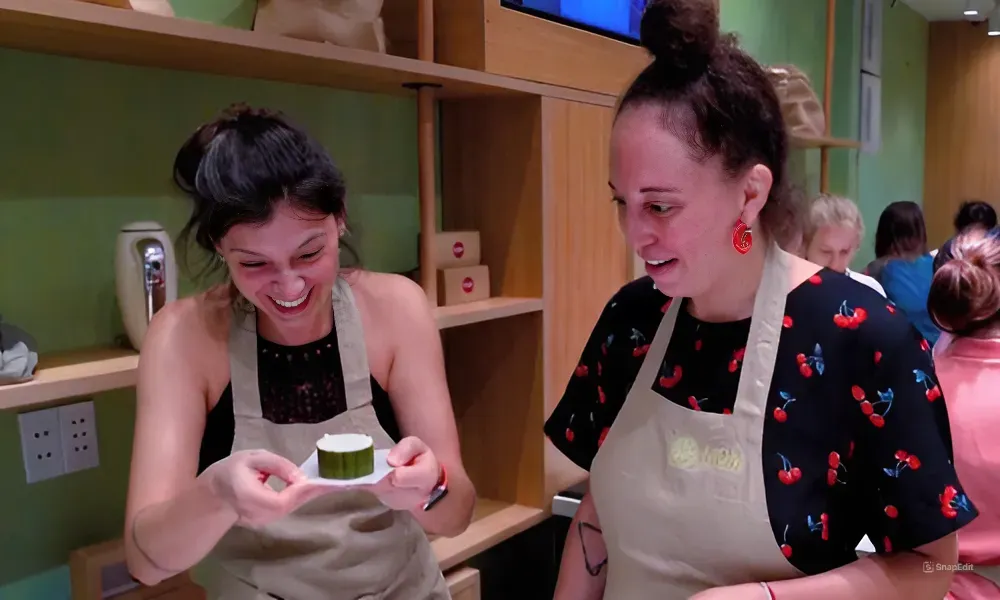
Moon cakes are not only delicious food but also a symbol of unity and completeness
Mooncakes hold a special place in the heart of the Mid-Autumn Festival, representing not just a delectable treat but a powerful symbol of family harmony. Their origin can be traced back to ancient times when mooncakes were used as offerings to the moon in hopes of obtaining blessings for good fortune and bountiful harvests. The round shape resonates with unity, tying the practice together with the festival’s overarching theme of completeness and reunion.
As families gather under the full moon, sharing mooncakes transforms the celebration into a poignant reminder of togetherness and collective joy. The fillings within the mooncakes, ranging from the deeply sweet to the pleasantly savory, complement the occasion, allowing for diverse interpretations of tradition as families explore flavors that resonate with their unique experiences.
3.2 Other Traditional Foods
In addition to mooncakes, other traditional foods play a vital role during Tết Trung Thu, adding depth and richness to the festival’s culinary offerings. The combination of these delectable delights reflects the festival’s importance and showcases the vibrant flavors of Vietnamese culture.
- Sticky Rice with Nuggets (Xôi Cẩm): This delightful sticky rice dish, often colored with natural ingredients such as pandan, embodies the spirit of the harvest. The vibrant colors of Xôi Cẩm symbolize prosperity and abundance, aligning with the festival’s roots in gratitude for the earth’s bounty.
- Cookies and Confectionery: Sweet cookies and treats, often family recipes passed down through generations, add whimsy to the festivities. As children gather around trays of colorful cookies, exchanging stories about their creations, they embody the spirit of the Mid-Autumn festival, reminiscent of the joy found in creating and sharing together.
- Herbal Teas: Celebrations are often paired with unique, refreshing herbal teas, infusing the atmosphere with soothing aromas and flavors. Sipping on tea during this time enhances the experience, allowing families to come together and enjoy moments of tranquility amidst the excitement of the festivities.
The essence of the Mid-Autumn festival lies in the joy of feasting together, celebrating both heritage and abundance, where traditional foods construct a flavorful landscape that unites and strengthens family bonds.
4. Celebrating Mid-Autumn Festival 2024 in North Vietnam
As the Mid-Autumn Festival unfolds in North Vietnam in 2024, traditional foods, vibrant festivities, and community spirit take center stage. This celebration, rich in symbolism and cultural heritage, emphasizes the importance of family bonds and shared experiences that transcend generations.
4.1 Lantern Making
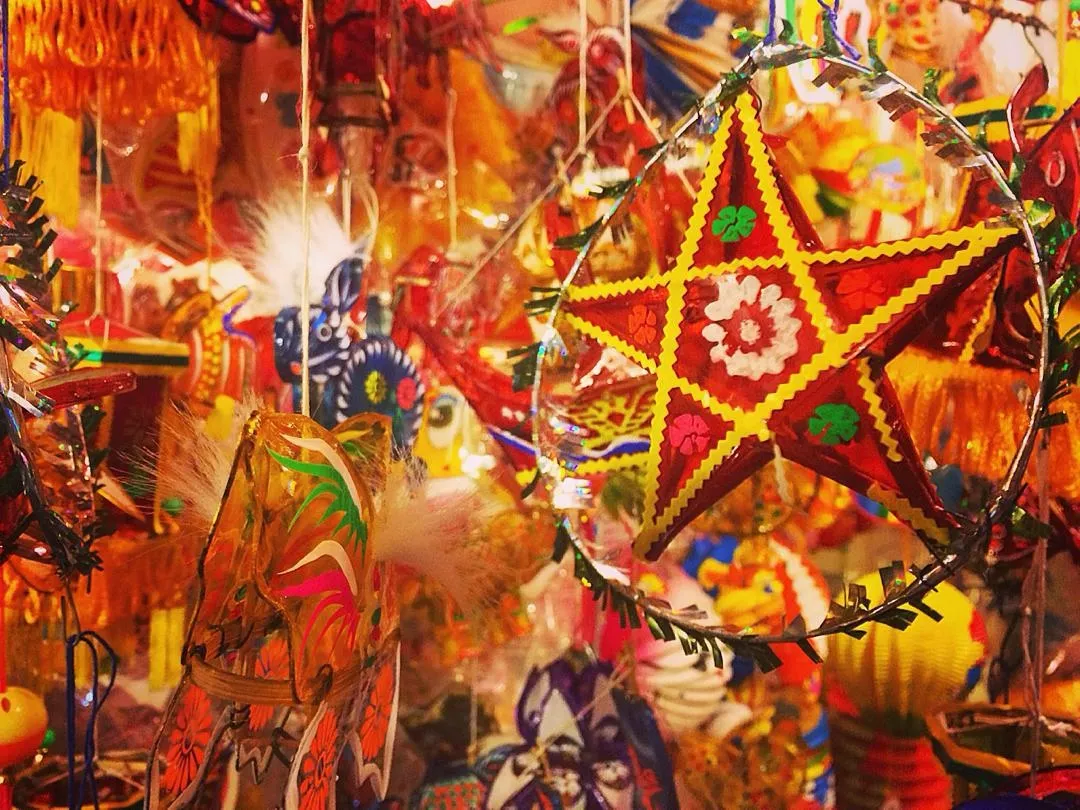
These lanterns symbolize the Earth revolving around the sun, illuminating the night as the streets become a vibrant and lively traditional performance
In the weeks leading up to the festival, one notable activity that stirs excitement among children is lantern making. Crafting colorful lanterns, often in whimsical shapes, unites families around tables strewn with vibrant paper and art supplies. The collaborative effort fosters creativity while allowing parents to pass down the joy of this tradition to their children.
Star-shaped lanterns, representative of guidance and hope, radiate with vibrant colors as the children parade with them during the festival night. Each lantern becomes a personal expression, symbolizing the dreams and aspirations of the young makers.
The excitement culminates as night descends and families venture out into the streets. The warm glow of lanterns illuminates the celebrations while laughter and joy fill the air with the joyous energy of the community. Lanterns twinkle like stars, enhancing the enchanting experience, and guiding families in a shared journey of love and togetherness.
4.2 Lion Dances
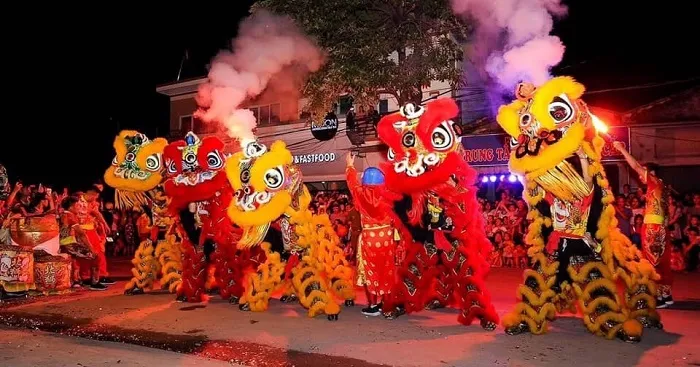
These vibrant and theatrical performances are believed to ward off evil spirits and bring good luck for the coming year
Another integral part of the Mid-Autumn Festival in North Vietnam is the vibrant tradition of lion dances. Bursting with energy and visual splendor, these performances bring a lively atmosphere, captivating audiences young and old. Throughout the festival, lion dance troupes adorned in colorful costumes showcase intricate choreography to the pulse of drums, gongs, and cymbals, resonating with the hypnotic rhythm that invigorates the crowd.
In a joyful display, dancers mimic the movements of a lion, reflecting strength and good fortune. These performances symbolize prosperity and are believed to ward off evil spirits, creating an aura of positivity and blessings for the community. As children join in, strengthening their connection to tradition, the lion dance becomes a dynamic expression of cultural pride brimming with excitement.
Not only do these performances enchant the spectators, but they also serve to connect people through shared cultural heritage and communal festivities. Lions dancing gracefully through the streets unite neighborhoods as families gather to witness the performances, celebrating the allure of past tales that breathe life into modern gatherings.
4.3 Ancestral Worship
An equally important aspect of the Mid-Autumn Festival is the practice of ancestral worship. In North Vietnam, reverence for ancestors remains a cornerstone of cultural identity. During the festival, families prepare a five-fruit tray and mooncakes as offerings, paying homage to their ancestors’ spirits.
This ritual, often performed before sharing food, emphasizes gratitude and respect. Families gather at ancestral altars, adorned with fruit offerings, incense, and flowers, creating a tranquil atmosphere. Before partaking in the festival’s delights, families express their hopes and desires for blessings, merging the past with the present.
4.6 Other Traditional Celebrations
The Mid-Autumn Festival celebrates not only individual family gatherings but also larger community celebrations brimming with joy and excitement. Traditional games and folk music resonate through the air, engaging children and adults alike.
- Lantern Processions: The streets come alive as children parade with their lanterns, showcasing an array of designs and colors. These processions embody vibrant displays of creativity and unity, where communities gather to celebrate.
- Cultural Games: Engaging in cultural games and contests fosters camaraderie, encouraging playful competition and gentle rivalry within neighborhoods. Children participate in decorating lanterns and mooncake-making contests, solidifying friendships and connections.
- Folk Music and Songs: A vital part of the celebrations involves traditional folk music, allowing children to perform songs and dances and celebrate their heritage. These joyful renditions create a vibrant atmosphere filled with laughter and vibrant energy.
- Decorative Altars: Families often elaborate on their altars, adorning them with offerings of fruits and mooncakes, mixing cultural aesthetics with heartfelt appreciation for both family and ancestors.
The Mid-Autumn Festival in North Vietnam is a beautifully woven tapestry of shared customs and intimate celebrations. While honoring their heritage, families come together to create everlasting memories reflecting love, gratitude, and the importance of nurturing communal ties.
5. Regional Variations
The Mid-Autumn Festival is characterized by regional variations across Vietnam, shaping how families and communities celebrate this nationwide event. These regional nuances create a rich and diverse tapestry of customs, from urban centers to tranquil rural landscapes.
5.1 Urban
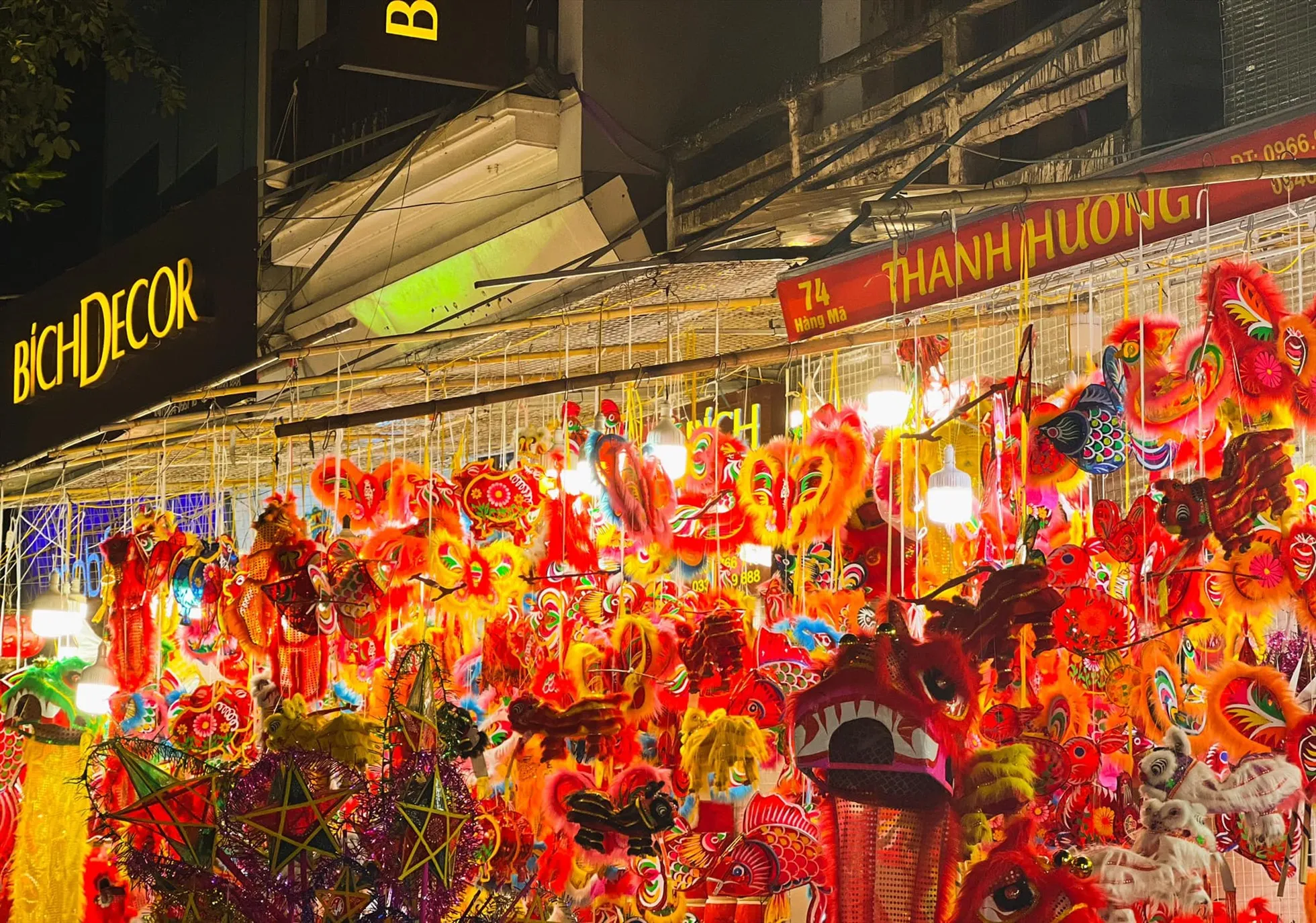
During the Mid-Autumn Festival, Hang Ma Street sells colorful lanterns, paper masks, and traditional toys
In urban settings such as Hanoi and Ho Chi Minh City, the festival exudes a lively and bustling ambiance. Streets filled with beautifully lit stalls and intricately designed lanterns create an electrifying atmosphere that captivates locals and tourists alike. Markets such as Hang Ma become hubs for mooncake purchases, where vendors showcase their culinary craftsmanship, and families indulge in vibrant shopping experiences.
Additionally, performances featuring lion dances and cultural acts dominate urban centers, drawing substantial crowds eager to witness these captivating displays. Events in public spaces feature professional artists and musicians, highlighting the communal spirit and entertainment value that bind communities together.
5.2 Rural
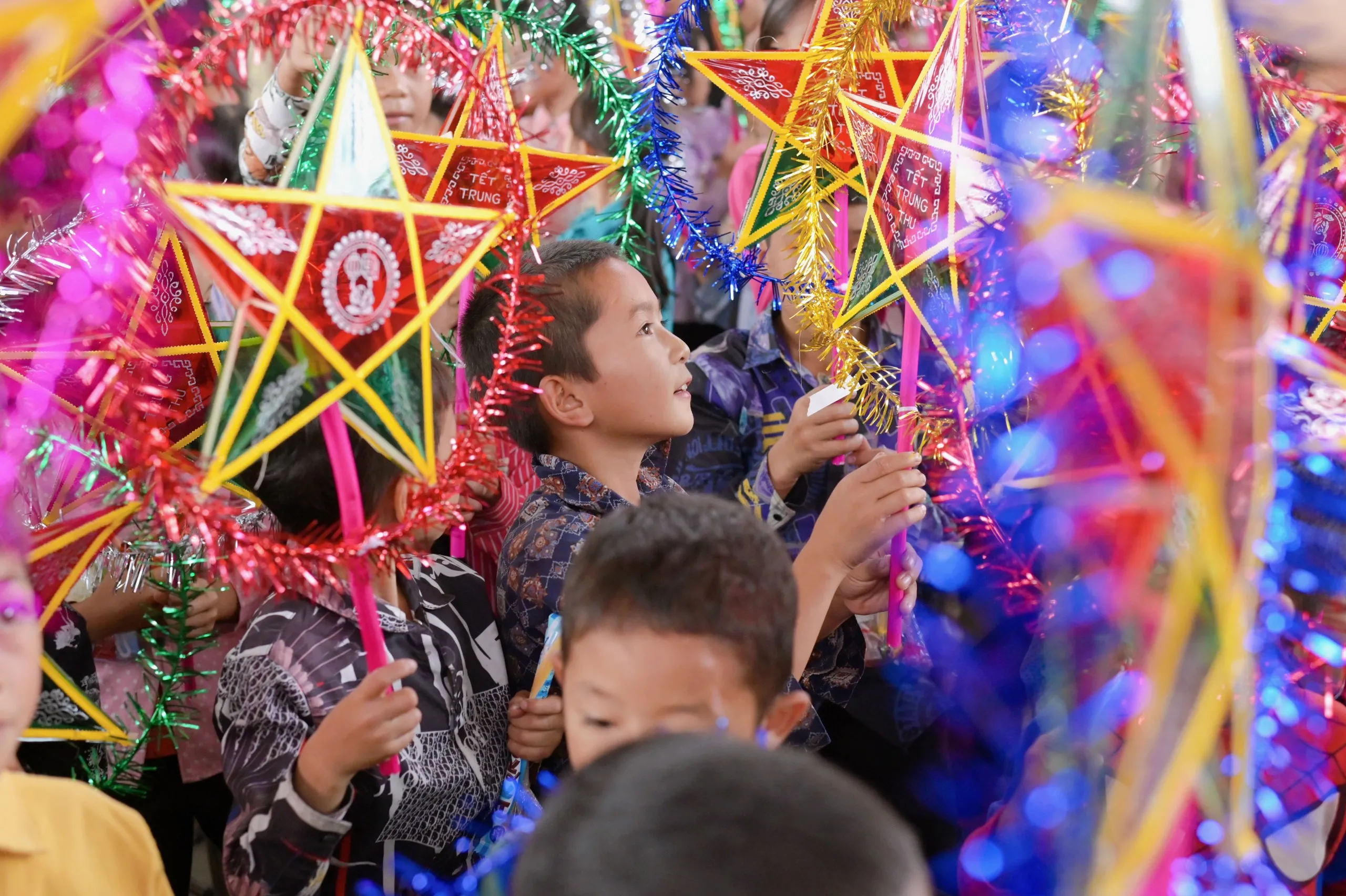
In Ha Giang, families often gather to make moon cakes, make handmade lanterns and participate in folk games
Contrasting the urban hustle, rural areas like Ha Giang approach the Mid-Autumn Festival with warmth and simplicity. The community prioritizes tight-knit gatherings, where families participate in creating traditional foods, sharing stories, and engaging in meaningful interactions. Lantern-making becomes a treasured family tradition, and children delight in their personal creations while reveling in their community ties.
The connection to nature and agriculture plays a prominent role during celebrations, with families gathering to express gratitude for the harvest. Traditional games and folklore storytelling maintain local customs that connect children to their roots, ensuring their heritage remains alive against the backdrop of modern influences.
Though differing in execution, both urban and rural celebrations encapsulate the spirit of the Mid-Autumn Festival each uniquely contributing to the cultural fabric of Vietnam and enshrining the importance of family, community, and tradition in the hearts of its people.
6. Why Experience the Mid-Autumn Festival in Vietnam?
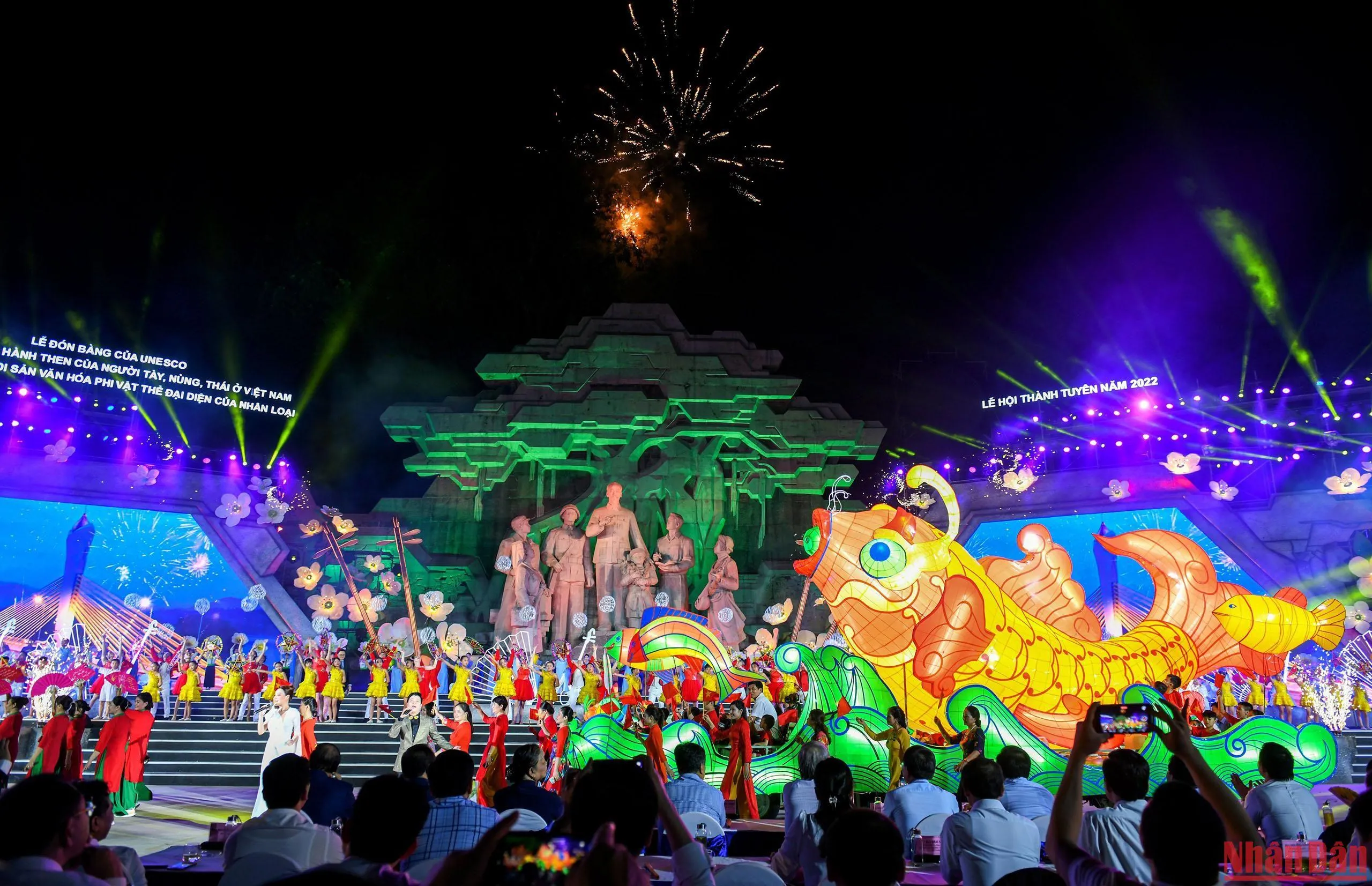
The Mid-Autumn Festival in Tuyen Quang is one of the most unique and largest Mid-Autumn festivals in Vietnam
Experiencing the Mid-Autumn Festival in Vietnam is an opportunity to immerse oneself in a rich tapestry of culture, tradition, and shared moments filled with joy. Here are several reasons why this festival should not be missed:
- Cultural Significance: Labeled as the “Children’s Festival,” Tết Trung Thu fosters a deep sense of belonging, promoting family togetherness while honoring heritage.
- Traditional Foods: Indulge in an array of traditional foods, particularly mooncakes, which represent unity and cultural heritage. Exploring these culinary delights unveils the diverse flavors that make the festival memorable.
- Festive Atmosphere: The colorful streets come alive with joyful parades, lantern processions, and delightful performances that captivate the senses and celebrate community spirit.
- Engaging Activities: Join in the festivities as families partake in cultural activities such as lion dances, games, storytelling, and musical performances, creating enjoyable moments that reflect heritage.
- Top Celebration Locations: Certain cities like Hanoi, Hoi An, and Tuyen Quang City stand out as premier locations for celebrating Tết Trung Thu, offering vibrant experiences filled with unique cultural offerings.
Experiencing the Mid-Autumn Festival in Vietnam allows visitors to engage with age-old traditions that promote family, community, and celebration, providing a glimpse into the beauty of Vietnamese heritage and cultural customs.
The Mid-Autumn Festival in Vietnam celebrates the beauty of family, nature, and tradition. As communities gather under the enchanting moonlight, every tradition, every mooncake shared, brings families and friends closer together, fostering an enduring legacy that echoes through generations. This celebration not only cherishes the past but also embraces the future of Vietnamese culture, preserving the vibrancy of its heartfelt customs, folklore, and bonds that unite its people. For more information, visit Karst Plateau and discover more about Vietnam’s festivals.

